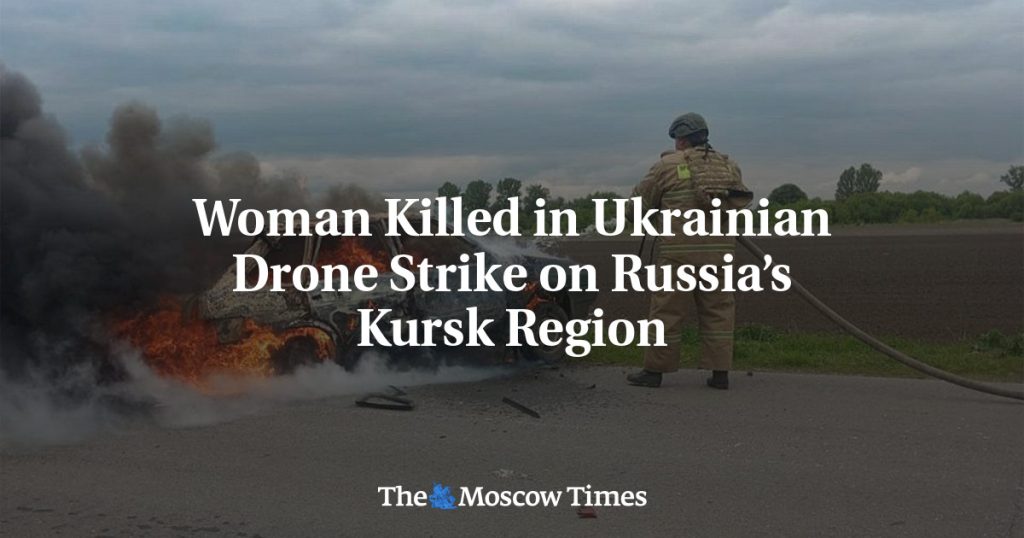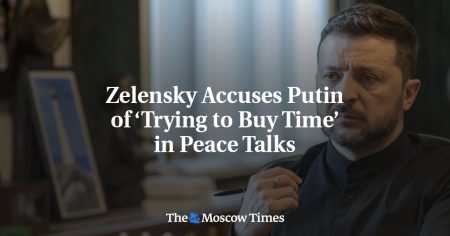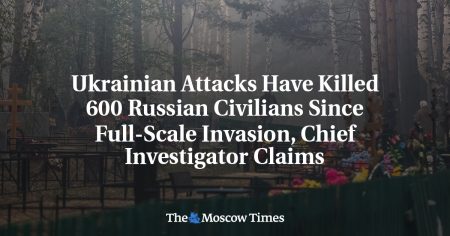In the Kursk region of western Russia, a Ukrainian drone strike resulted in the death of one woman and the injury of three others. The regional government reported that the attack targeted vehicles in the Glushkovsky district, dropping explosive devices on them in the village of Popover-Lezhachi near the border with northeastern Ukraine’s Sumy region. Photos shared by authorities showed burning cars being extinguished by firefighters at the scene. The incident highlights the ongoing conflict between Ukraine and Russia, with Ukrainian drone attacks on Russian territory increasing in recent months.
Governor Roman Starovoit had issued a warning to residents about the possibility of a drone strike around midnight, but has not made any further comments on the latest attack. Russia’s Defense Ministry announced that its air defense systems successfully shot down eight drones over the Kursk region overnight, along with numerous other drones and missiles over neighboring regions like Belgorod, Lipetsk, and annexed Crimea. These defense efforts indicate the seriousness with which Russia is responding to the threat of drone attacks, which have become more prevalent as the conflict between Ukraine and Russia continues without a clear resolution in sight.
The ongoing war in Ukraine has led to increased tensions between the two countries, with Ukraine targeting key Russian infrastructure, such as oil refineries, in an attempt to disrupt Moscow’s fuel production. This strategy aims to weaken Russia’s economy and put pressure on the government with the hope of achieving favorable outcomes in the conflict. The recent drone strike in the Kursk region is just one example of the tactics employed by Ukrainian forces as part of their efforts to push back against Russian aggression and assert their own interests in the region.
The use of drones in conflict zones has become a common occurrence in modern warfare, allowing for precision strikes and remote attacks on enemy targets. Ukraine’s ability to launch drone attacks on Russian territory demonstrates the country’s technological capabilities and willingness to engage in asymmetrical warfare with its larger neighbor. The drone strike in the Kursk region serves as a reminder of the ongoing hostilities between Ukraine and Russia, and the challenges faced by both sides as they seek to achieve their respective objectives in the conflict.
The conflict between Ukraine and Russia has far-reaching implications for regional stability and international relations, as both countries are key players in the geopolitical landscape of Eastern Europe. The ongoing drone attacks and other military actions signal the deep-rooted animosity and strategic rivalry between the two nations, with no clear resolution in sight. The international community closely monitors developments in the region, as the conflict has the potential to escalate into a larger-scale confrontation with serious consequences for all parties involved.
As the conflict between Ukraine and Russia continues to unfold, the use of drones and other advanced technologies in warfare poses new challenges and risks for both sides. The recent drone strike in the Kursk region is a stark reminder of the volatile situation in the region and the potential for further escalation of hostilities. The international community plays a crucial role in mediating the conflict and preventing further violence, as the stakes are high for all involved. Ultimately, a peaceful resolution to the conflict is essential to ensure stability and security in the region and beyond.















